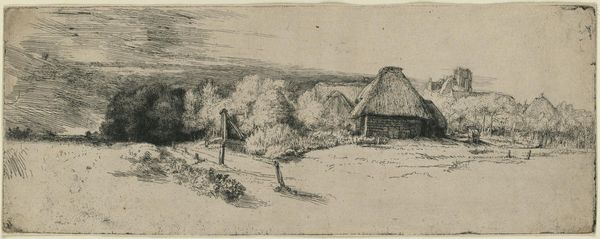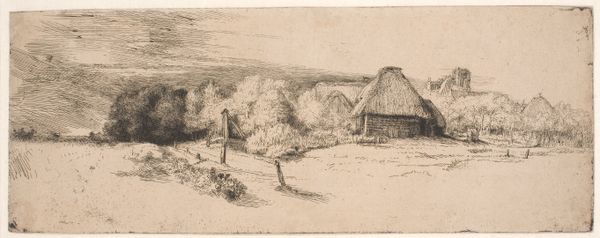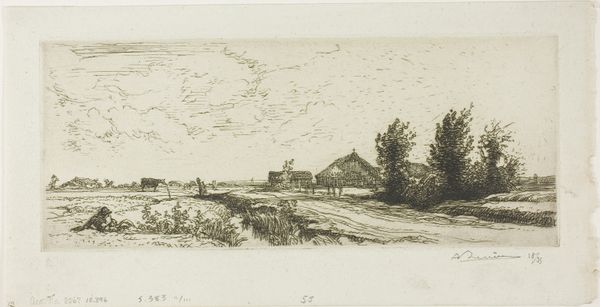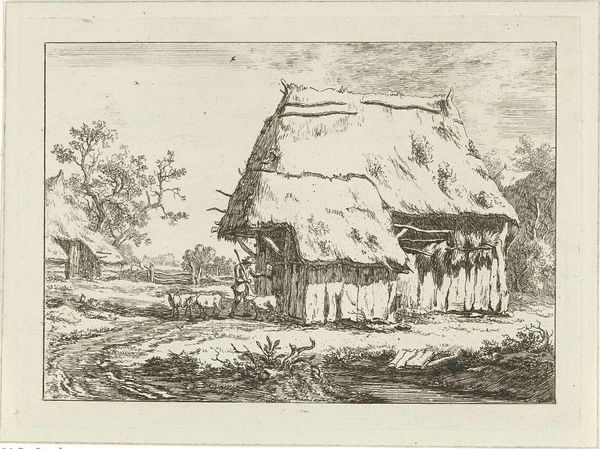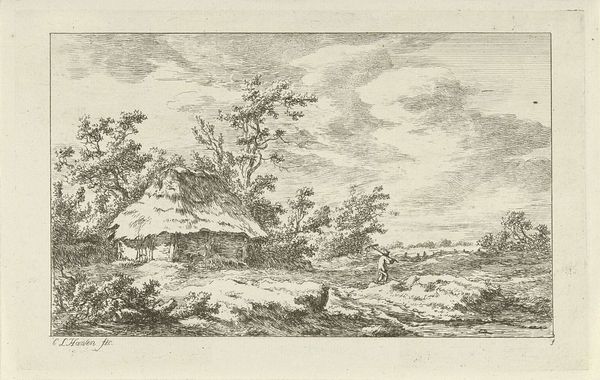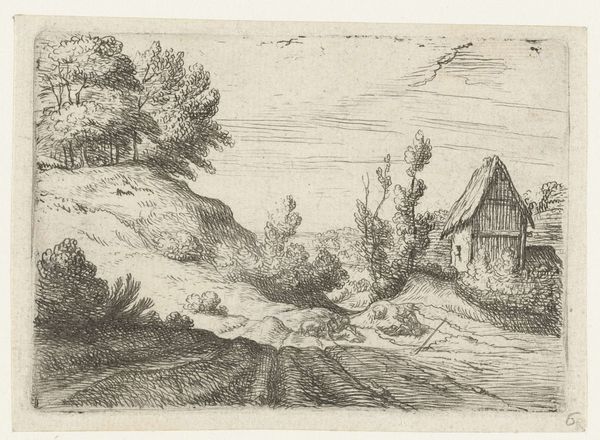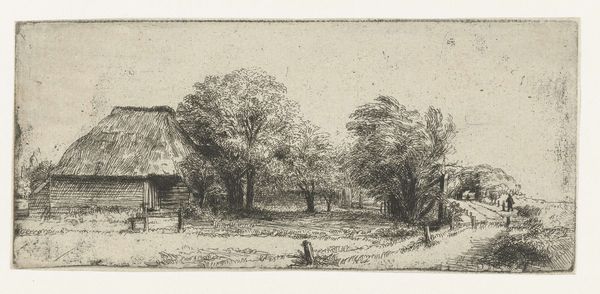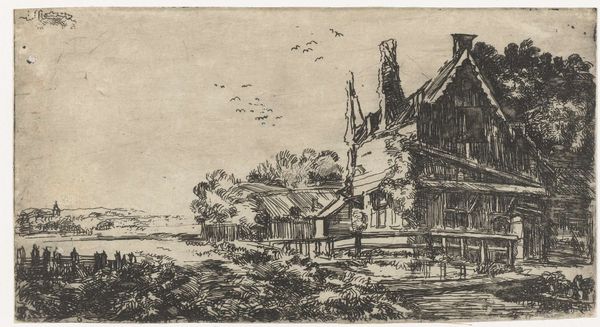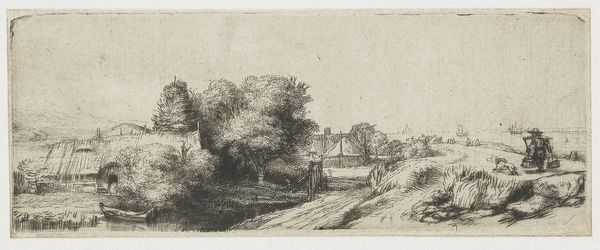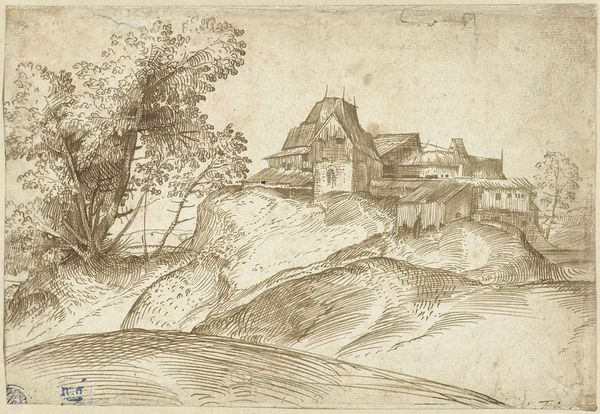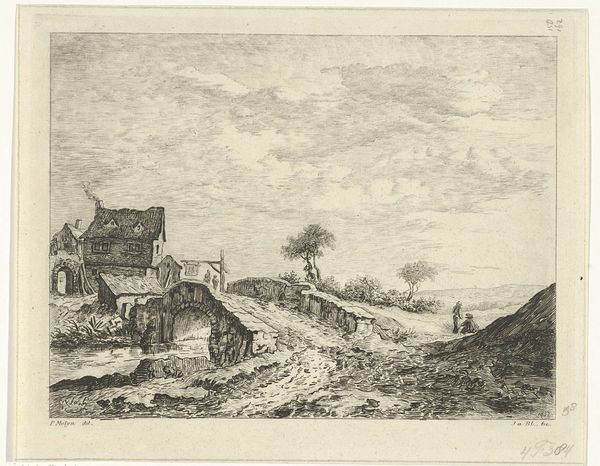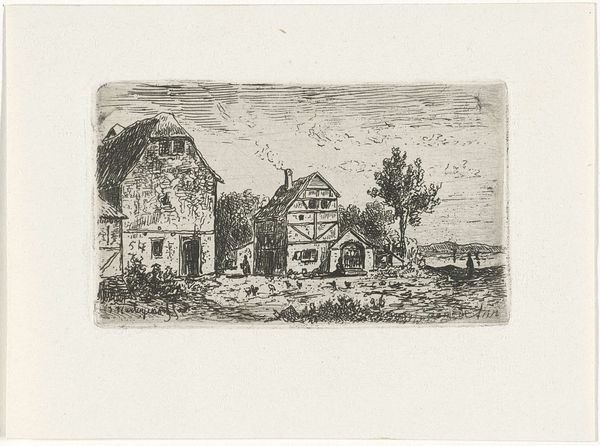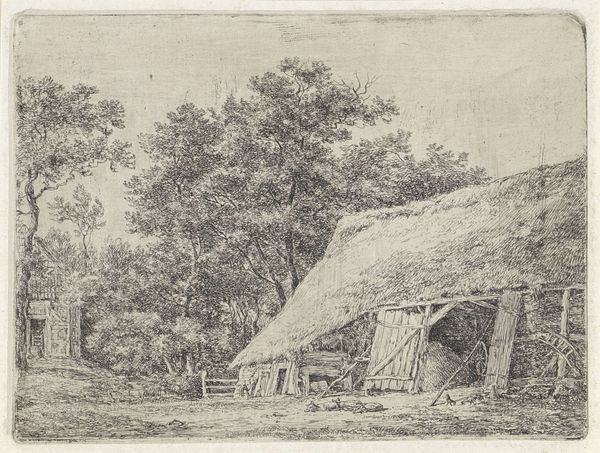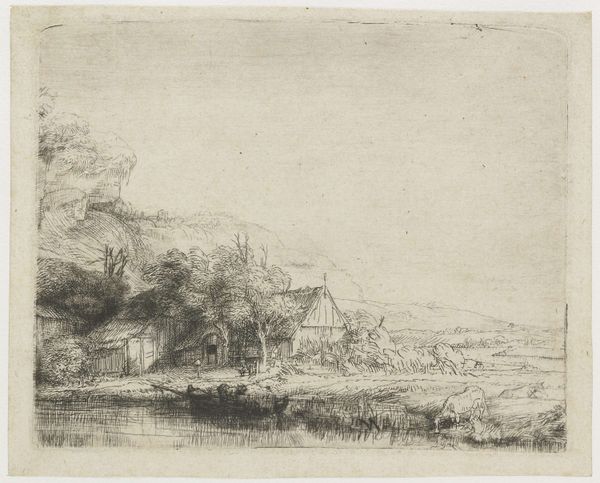
Landscape with a farm building and the 'house with the tower' c. 1650
0:00
0:00
drawing, paper, ink
#
drawing
#
dutch-golden-age
#
landscape
#
paper
#
ink
Dimensions: height 121 mm, width 318 mm
Copyright: Rijks Museum: Open Domain
Curator: Here we have Rembrandt van Rijn’s "Landscape with a farm building and the 'house with the tower'," a pen and brown ink drawing on paper, dating from about 1650. It's currently held at the Rijksmuseum. Editor: Wow, it’s like a captured moment of quiet observation. You almost feel the weight of the air. So simple, yet dense. And what about the landscape? There's a house, seemingly abandoned, the dark tower watches, I immediately want to weave a fairy tale about the lives that have lived there. Curator: That response chimes beautifully with how I see this work. The landscape here functions almost as a repository of cultural memory. Notice the deliberate depiction of the traditional thatched-roof building. It represents not just rural life, but also a connection to older, perhaps simpler values rooted in community. Editor: Right, there is a quiet narrative, a subtle symbolism. He uses line work in a way to hint, not just to depict the thatched roofs but to make me *feel* them. You mentioned the buildings; the “house with the tower” in the background almost feels… judgmental. Is that just me projecting? Curator: Well, consider the psychological implications. Towers, architecturally, represent power and aspiration. But visually, within this pastoral setting, it evokes a sense of detachment, or even alienation from the organic unity of the rural landscape. This house becomes, thus, not only a geographical but also a psychological landmark. Editor: I am always surprised by the magic of scale. Knowing it’s a drawing on paper, an intimate piece, makes the sweeping feeling of open space almost paradoxical. Did people back then appreciate these scenes the same way? Do you think they recognized something deeper in the common place? Curator: Absolutely. Dutch Golden Age landscapes weren't merely topographical records; they expressed emerging national identity. Landscapes helped cultivate pride in the homeland and resonate as strong statements of cultural self-assurance, laden with the spirit of "Dutch-ness". This little drawing is such a vast encapsulation. Editor: A cultural treasure, deftly and magically rendered. I see new narratives with each gaze. Curator: Indeed, the longer we engage, the more that subtle psychological undercurrent comes to light, as if we were peering into Rembrandt’s inner world while he captures an old forgotten tower in rural Netherlands.
Comments
No comments
Be the first to comment and join the conversation on the ultimate creative platform.
